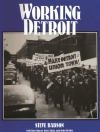In the aftermath of major violent events that affect many, we seek to know the ‘truth’ of what happened. Whatever ‘truth’ emerges relies heavily on the extent to which any text about a given event can stir our emotions – whether such texts are official sources or the ‘voice of the people’, we are more inclined to believe them if their words make us feel angry, sad or ashamed. If they fail to stir emotion, however, we will often discount them even when the reported information is the same. Victoria Carpenter analyses texts by the Mexican government, media and populace published after the Tlatelolco massacre of 2 October 1968, demonstrating how there is no strict division between their accounts of what happened and that, in fact, different sides in the conflict used similar and sometimes the same images and language to rouse emotions in the reader.
Cuprins
Acknowledgements
Introduction: ‘2 October Is Not Forgotten’
‘And All This Happened to Us’: Events of the Night of 2 October in the State and Public Discourses
Affect and Reason: Analysis of the Massacre in the State and Public Discourses
‘Unfortunate and Sad Fate’: Emotional Reaction to the Massacre in the State and Public Discourses
Conclusion: The Symbolic Value of ‘2 October’ Is Not Forgotten
Bibliography
List of Tables
Table 1. Points of agreement, contention and grey areas in the state discourse (Ch. 2)
Table 2. Points of agreement, contention and grey areas in the public discourse. (Ch. 2)
Table 3. Archive components and associated emotions. (Ch. 5)
Despre autor
The book is intended for scholars and students of Latin American literary and cultural studies, political theory, and Mexican history, literature and culture worldwide. It is also intended for a more general readership interested in the above subject areas. The book offers a comprehensive reading of the Tlatelolco massacre corpus of texts, both fictional and non-fictional, grounded in a novel combination of the theories of posthegemony and collective memory. It reveals hitherto unexplored link between the state and the public discourse when retelling the story of the massacre.












